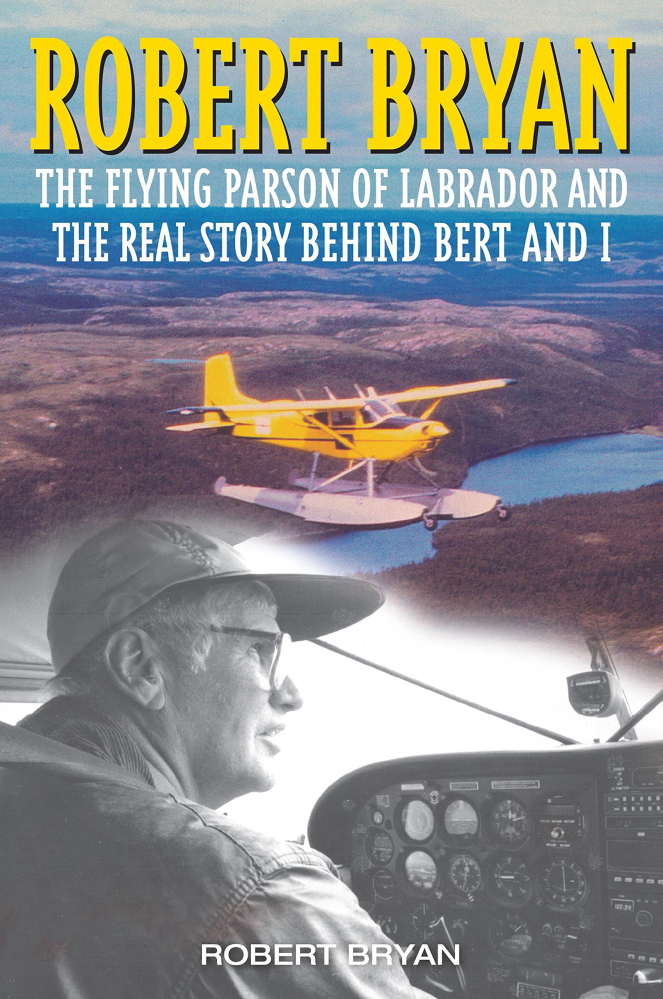In this fascinating autobiography, Robert Bryan recounts his life as the flying parson of maritime Quebec and Labrador who piloted float planes alone through the wilderness.
During four decades flying to isolated settlements strung across Quebec’s North Shore, Bryan did more than give sermons. He flew sick and injured patients to hospitals, frequently under terrible weather conditions, and participated in rescues at sea and on arctic ice.
Bryan’s career as bush pilot-minister began in 1962 when he moved with his wife, Faith, and their three small daughters to the tiny village of Harrington Harbour on the north shore of the Gulf of Saint Lawrence.
Like other “towns” on the Quebec North Shore, Harrington Harbour had no roads or telephone service. The Bryan family lived in a wood-heated parsonage without plumbing.
“There was no dump until the late 1960s,” the author writes, “so waste was dumped out behind the house or into the sea.… I recognize that this was far from an environmentally appropriate disposal method.”
The flying parson of Labrador gravitated to adventure from the start. One of seven children, Bryan grew up on Long Island, New York, in the 1930s. Fascinated by Grumman Aircraft fighter planes that roared overhead, he was determined to fly. Summer camping at Tunk Lake north of Bar Harbor galvanized his interest in the northern wilderness.
Outgoing and capable, Bryan went to Yale Divinity School, where he met the late Marshall Dodge.
Bryan collaborated with Dodge, and later Tim Sample, to tell and record the popular “Bert & I” stories.
Income from “Bert & I” helped buy Bryan’s first float plane and supplemented his austere minister salary.
Bryan’s Sunday routine on the Quebec North Shore was to preach a sermon in Harrington Harbour, then fly to another village to deliver a second service. He and his plane were on call for medical emergencies day and night.
In the 1960s, the only hospital in the region was a small mission in Harrington Harbour served by Dr. Donald Hodd, who had been there since 1926. When Hodd received a radio alert for an emergency somewhere on the North Shore, “he would stand outside my window in the middle of the night and call my name,” Bryan writes. Other times, the author continues, “I would look up during the 8 a.m. communion service … and see him motioning to me from the church door.”
The flying minister administered first aid and helped with obstetrics. Never a braggart, he developed deep respect for the people of Labrador and the Quebec North Shore.
They had, he writes, “a way of life that bred a nobility of spirit, pride, tenacity and instinct for self-sufficiency that I deeply admire.”
What I came to admire in reading this book is Bryan’s exuberance for life. He founded the Quebec-Labrador Foundation to connect students with higher education and to promote environmental standards. He loved his work and people.
Electricity, snowmobiles and foreign fishing vessels brought a fast forward to the 21st century, with the latter of those depleting fish stocks that supported the Quebec settlements. Bryan helped smooth the transition through the Quebec-Labrador Foundation.
Now retired, Bryan lives in Quebec and Massachusetts, and makes frequent trips to Maine.
My only reservation about this overall wonderful autobiography is the space Bryan devotes to description of his beloved airplanes. I’m left with some curiosity about his family, particularly his intrepid first wife, Faith, who died of cancer.
But “The Flying Pastor of Labrador” remains an inspiring book about a life well lived.
Lloyd Ferriss is a writer and photographer who lives in Richmond.
Send questions/comments to the editors.


